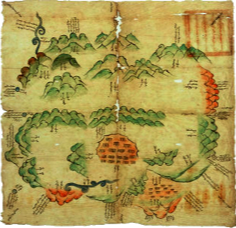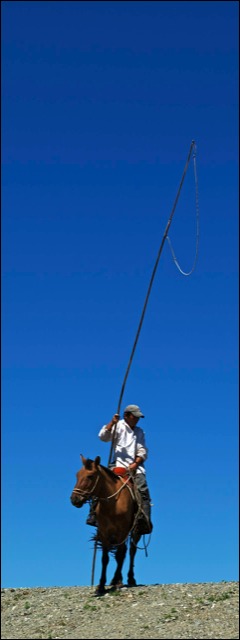DAY ONE — ULAANBAATAR
We will arrive in Ulaanbaatar in time for an orientation and group dinner to finally get to know each other in person.
DAY TWO — ULAANBAATAR
Today we will explore the Gandan Khiid, one of the largest Buddhist monasteries in Mongolia; the name translates to "the great place of complete joy." Because of its religious, artistic, political and cultural significance, it was granted preservation status in 1961 by the National Key Cultural Relic Preservation scheme. We will spend time with the more than 600 monks who belong to this monastery as we wander through and marvel at rare cultural relics including jewel-studded armor from the Qing Dynasty, exquisite tapestries, sutra inscribed in gold, and other amazing works of art.
DAY THREE TO FOUR — KHARKHORIN
After breakfast, we leave the busy city and travel to Kharkhorin where we will spend two nights at a ger camp. We will slow down to enjoy big, cold, and remote but beautiful landscapes of rolling steppes and semi-arid desert. Kharkhorin is part of the Orkhon Valley Cultural Landscape, a World Heritage Site that encompasses and extensive area of pastoral land along the Orkhon River. The site represents the evolutionary links between nomadic and pastoral societies and administrative and religious centres that are rooted in Genghis Khan's 13th and 14th century empire.
The old capital (once known as Kharakhorum) was a thriving supply base during the 13th century but lost its status when the capital was moved to what is now known as Beijing. It was abandoned and destroyed and 300 years later Erdene Zuu Khidd, one of the most important monasteries in the country, was built in its place.
We will be in Kharkhorin during the Naadam Festival, Mongolia's traditional festival of games. The celebration is held in towns and villages across the country and brings together locals, soldiers, monks, and athletes in an atmosphere filled with traditional dress, lively music and tasty food. It is undoubtedly the best time to experience and photograph the Mongolian people and culture.
DAY FIVE — ONGIIN KHIID
We leave Kharkhorin and make our way to Ongiin Khiid, which is known as the door to the Gobi Desert. We will overnight in another ger camp and have a chance to see the ruins of two monasteries located along the Ongii River.
DAY SIX — KHONGORYN ELS
Khongoryn Els, sometimes referred to as the "Singing Dunes," is home to Mongolia's largest and most impressive sand dunes. We will enjoy the light at the edges of day and spend time soaking in the dramatic landscape before retiring to our ger camp falling asleep to the sounds of silence of the Gobi Desert. (For those who desire, there will be the option of spending the night at the dunes in tents.)
DAY SEVEN — BAYANZAG
Also called the Flaming Cliffs because of its intense orange rock in the morning and at sunset, Bayanzag is where Roy Chapman Andrews discovered the first dinosaur eggs in the valley making the Gobi famous back in 1923. Later UNESCO registered the site with World Heritage as it represented extremely rare paleontological findings some of which are on display at Mongolia's Museum of Natural History in Ulaanbaatar. We will spend the night at Three Camel Lodge, where your ger is appointed with a private bathroom, a comfy king-size bed, and an unobstructed view of the Gobi-Altai Mountains.
DAY EIGHT — TSAGAAN SUVRAGA
Next we travel to Tsagaan Suvraga, a place often compared to the painted desert of Utah. From the eroded limestone cliffs, we will have a full view of the desert floor below and ample opportunity to photograph the seemingly unending landscape as it changes from yellow to pink and red. We overnight here in a ger camp.
DAY NINE — BAGA GAZRYN
As we make our way out of the Gobi, we stop at Baga Gazryn. This semi-desert landscape is home to the Mongolian birds of prey familiar to us through photographs from the region. It is also popular for extensive granite formations that hide archeological findings, suggesting that it was a place of spiritual worship. It seems fitting that this is where we will spend our last night before returning to Ulaanbaatar.
DAY TEN TO ELEVEN— ULAANBAATAR
Following breakfast, we travel back to where our adventure started. We pass through scenic areas with a final opportunity to photograph a land you will have fallen in love with by now. By evening we arrive in Ulaanbaatar and will have one last chance to dine together with those who have become life-long friends before saying our goodbyes the following morning.
Although this represents the photographic adventure's planned itinerary, it is subject to change at the discretion of the tour leaders.

